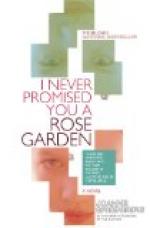“Blue, blue, as if the sky let fall
A flower from its cerulean wall!”
The same white setting enhances the brighter colours, though in a less degree than blue, which is, next to magenta, one of the most difficult colours to place in the garden. In view of this fact it is not strange that it is a comparatively unusual hue in the flower world and a very rare one among our neighbourly eastern birds, the only three that wear it conspicuously being the bluebird, indigo bird, and the bluejay.
It is this useful quality as a setting that gives value to many white flowers lacking intrinsic beauty, like sweet alyssum, candy-tuft, the yarrows, and the double feverfew. In buying seeds of flowers in mixed varieties, such as asters, verbenas, Sweet-William, pansies, or any flower in short that has a white variety, it is always safe to buy a single packet of the latter, because I have often noticed that the usual mixtures, for some reason, are generally shy not only of the white but often of the very lightest tints as well.
In selecting asters the average woman gardener may not be prepared to buy the eight or ten different types that please her fancy in as many separate colours; a mixture of each must suffice, but a packet of white of each type should be added if the best results are to be achieved.
The same applies to sweet peas when planted in mixture; at least six ounces of either pure white or very light, and therefore quasi-neutral tints harmonizing with all darker colours, should be added. For it is in the lighter tints of this flower that its butterfly characteristics are developed. Keats had not the heavy deep-hued or striped varieties in mind when he wrote of
“... Sweet Peas on tiptoe for a flight, With wings of gentle flush: o’er delicate white, And taper fingers catching at all things To bind them all about with tiny rings.”
If you examine carefully the “flats” of pansies growing from mixed seed and sold in the market-places or at local florists’, you will notice that in eight out of ten the majority of plants are of the darker colours.
There are white varieties of almost every garden flower that blooms between the last frost of spring and winter ice. The snowdrop of course is white and the tiny little single English violet of brief though unsurpassing fragrance; we have white crocuses, white hyacinths, narcissus, lilies-of-the-valley, Iris, white rock phlox, or moss-pink, Madonna and Japan lilies, gladiolus, white campanulas of many species, besides the well-known Canterbury bells, white hollyhocks, larkspurs, sweet Sultan, poppies, phloxes, and white annual as well as hardy chrysanthemums.
Almost all the bedding plants, like the geranium, begonia, ageratum, lobelia, etc., have white species. There are white pinks of all types, white roses, and wherever crimson rambler is seen Madame Plantier should be his bride; white stocks, hollyhocks, verbenas, zinnias, Japanese anemones, Arabis or rock cress, and white fraxinella; white Lupins, nicotiana, evening primroses, pentstemons, portulaca, primulas, vincas, and even a whitish nasturtium, though its flame-coloured partner salvia declines to have her ardour so modified.




